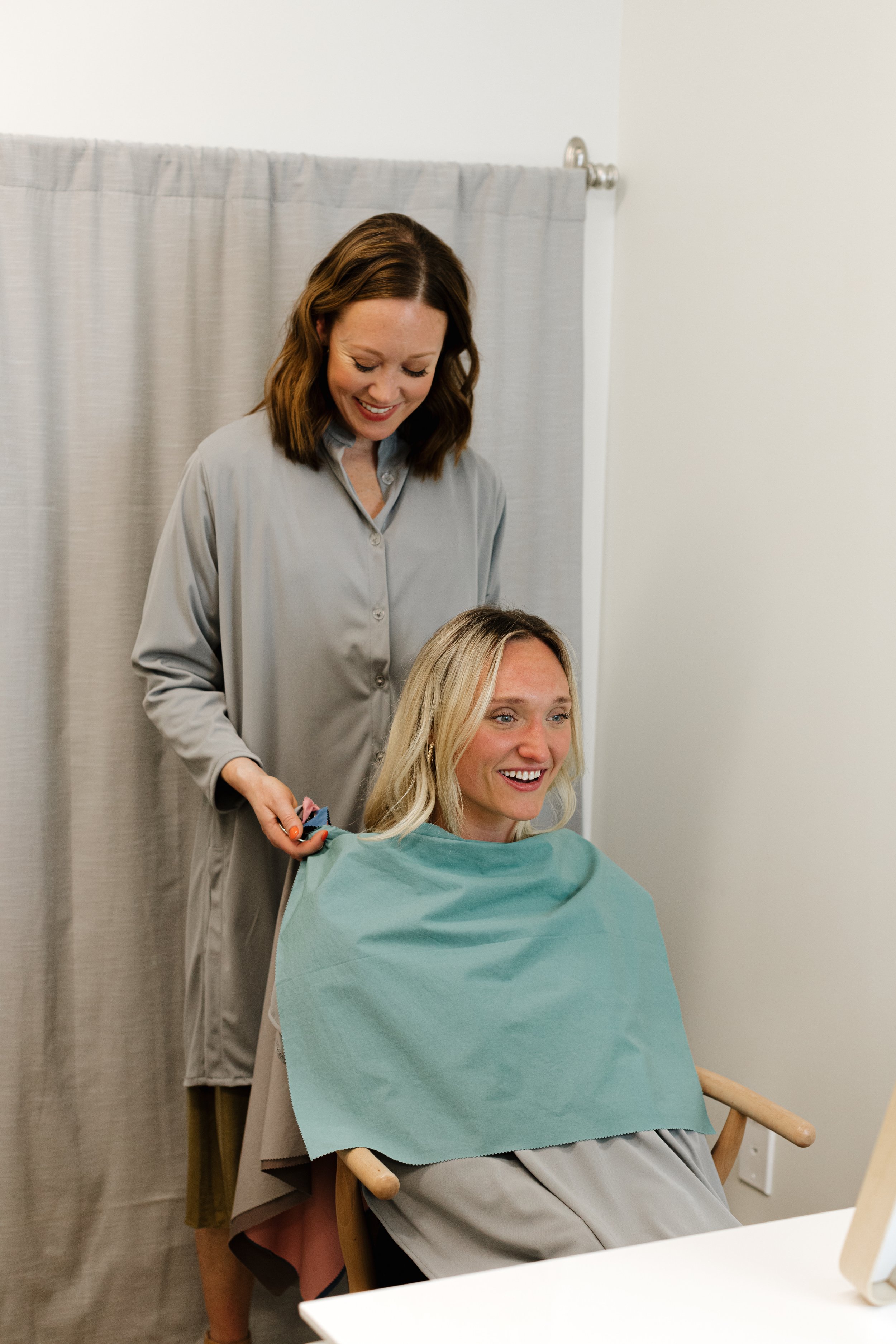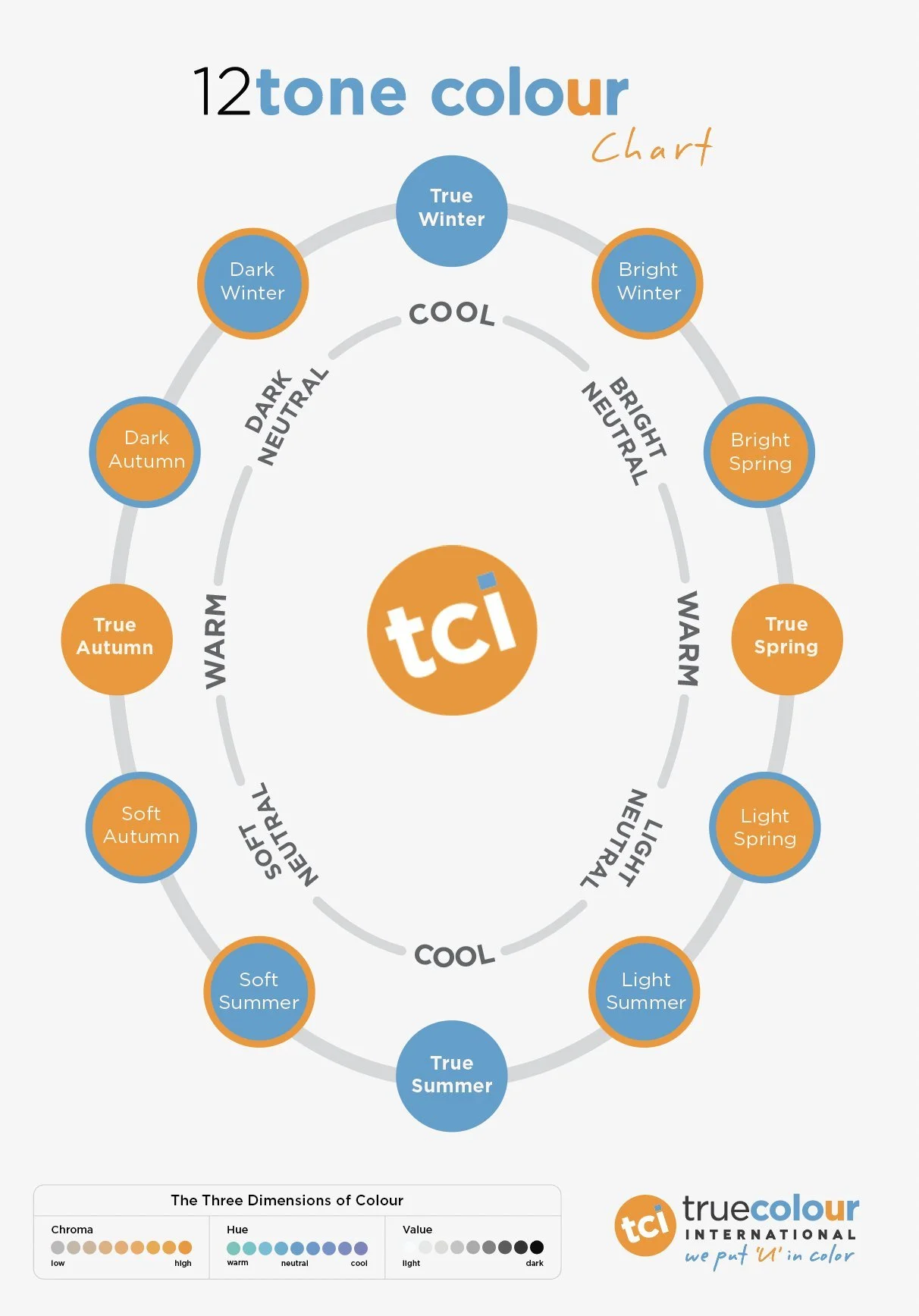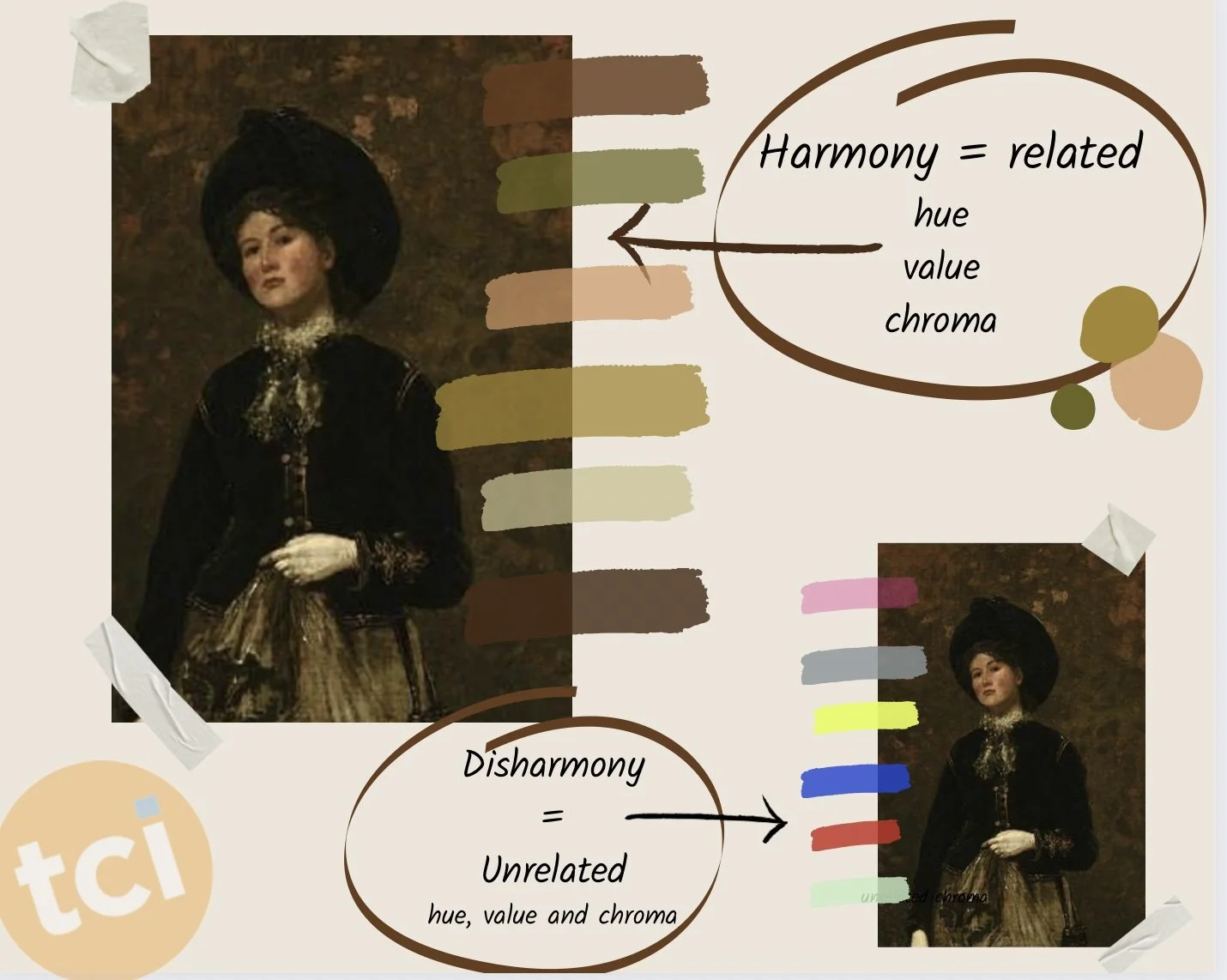
The Science of Color Analysis
Color is powerful. There are colors that enhance your appearance and colors that detract and distract. Not surprisingly, there is a scientific basis for these realities.
As a certified True Colour International analyst, I apply TCI’s proven 12-Tone method. This color analysis system is based on the science of natural color harmony, accurate interpretation of the Munsell color system, full-spectrum light theory and human physiology. I will explain the background in detail below, but some highlights of this method’s advantages include:
Measures more than 1800 hues
Encompasses the full realm of color
Reveals your natural color harmony
Provides distinctive, measurable and identifiable hues
Gives you a premium quality personal color palette
Showcases 60+ hues in each tone
Okay, let’s dive in!
12-Tone Color Analysis
Human coloration is diverse, beautiful and affected by our undertone which makes up our natural skin pigmentation.
Traditional color analysis had four true seasons: Winter, Spring, Summer, and Autumn. People were categorized as either a cool season: Winter and Summer or warm season: Autumn and Spring.
However, two-thirds of the population actually have an undertone that is neither cool nor warm but somewhere in between; they have what is called a neutral undertone.
For this reason, the TCI Method includes eight neutral seasons in addition to the original four seasons. These 12 color tones ensure an accurate and precise result. And they beautifully encompass the full range of color tones found in all races and ethnicities.
Three Dimensions of Color
The 12-Tone method of color analysis is based in part on the three dimensions of color, introduced by Professor Albert Munsell in 1905. Munsell brought clarity to color communication by establishing an orderly system for accurately identifying every color that exists.
Munsell separated hue, value and chroma into independent dimensions, and illustrated the colors systematically in three-dimensional space. His system is still the standard today in the world of color communication and also guides us in our approach to personal color analysis.
Since all colors have these three dimensions, this theory also applies to the colors that naturally appear in each of us — our skin, hair, and eye color.
During your in-person color analysis, we will discover what combination of hue, value and chroma are best for you! Getting this specific means you will receive an accurate result and colors that harmonize with your natural tone.
HARMONY vs. DISHARMONY
“Beauty represents itself as a unified whole.” — Kathryn Kalisz, Master Munsell Colorist. The goal of personal color analysis is to discover the colors that are harmonious with your natural coloring. When we look at this beautiful painting “Autumn” by Winslow Homer (1877), we see a beautifully harmonious portrait. This woman is neither washed out nor overpowered. The tones are related, calm and balanced. When we look at the lower version, it is easy to see that the bright colors and cool colors are unrelated, they are disharmonious. If we were to add these colors to this painting, the effect would be distracting, disconnected and garish. We are a canvas and the colors we add — our clothing, accessories, and makeup — all affect the overall impression of harmony, balance, beauty.







